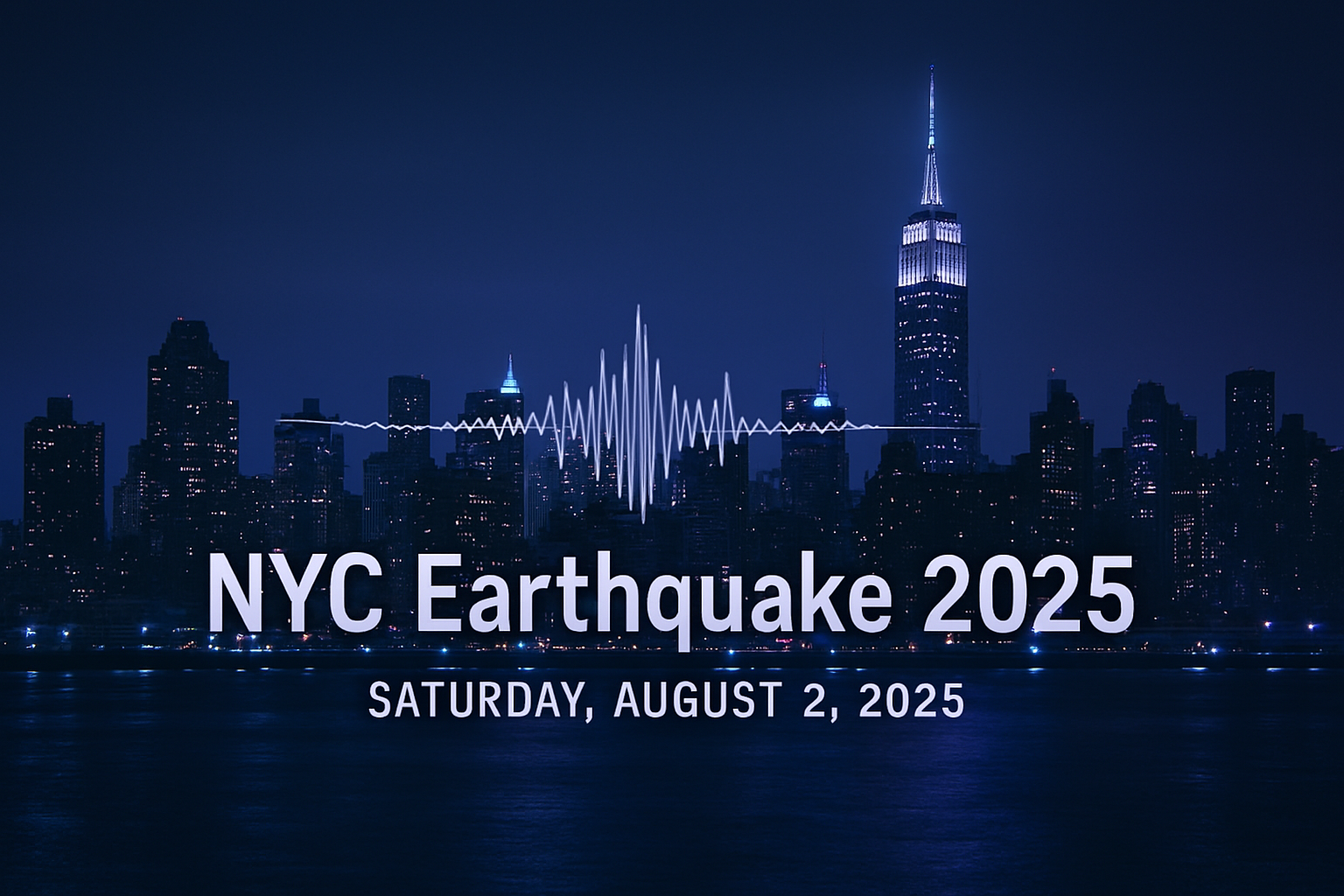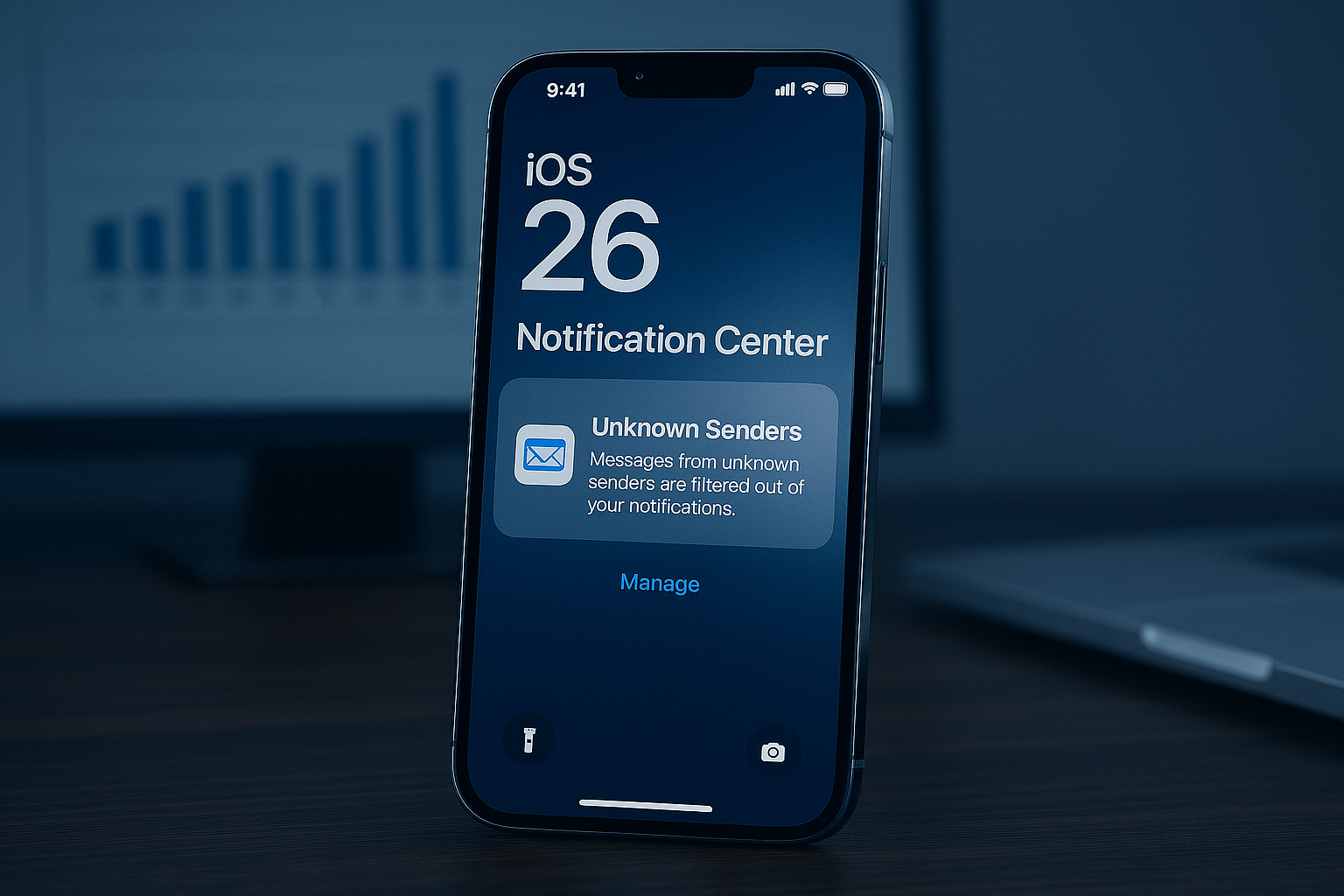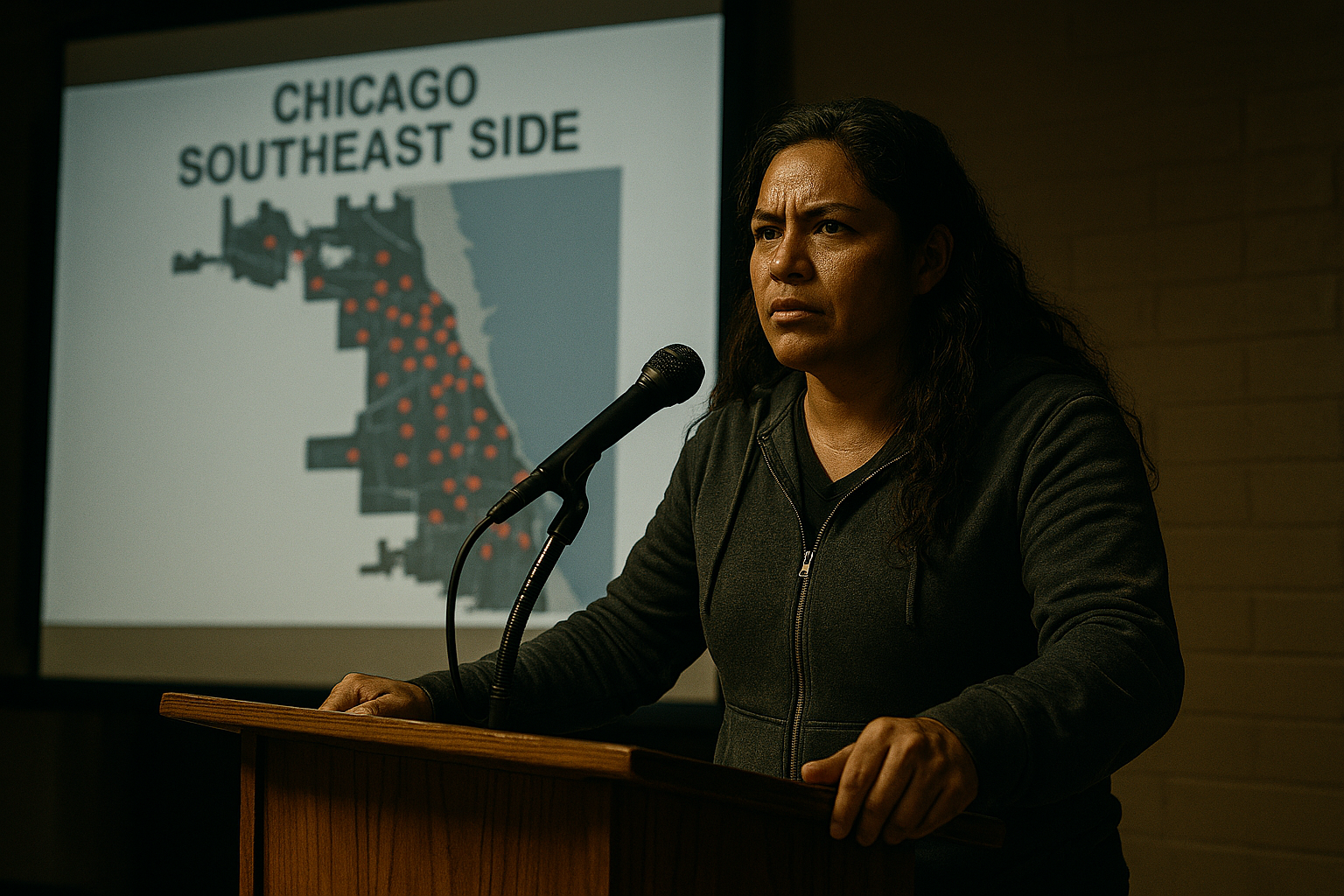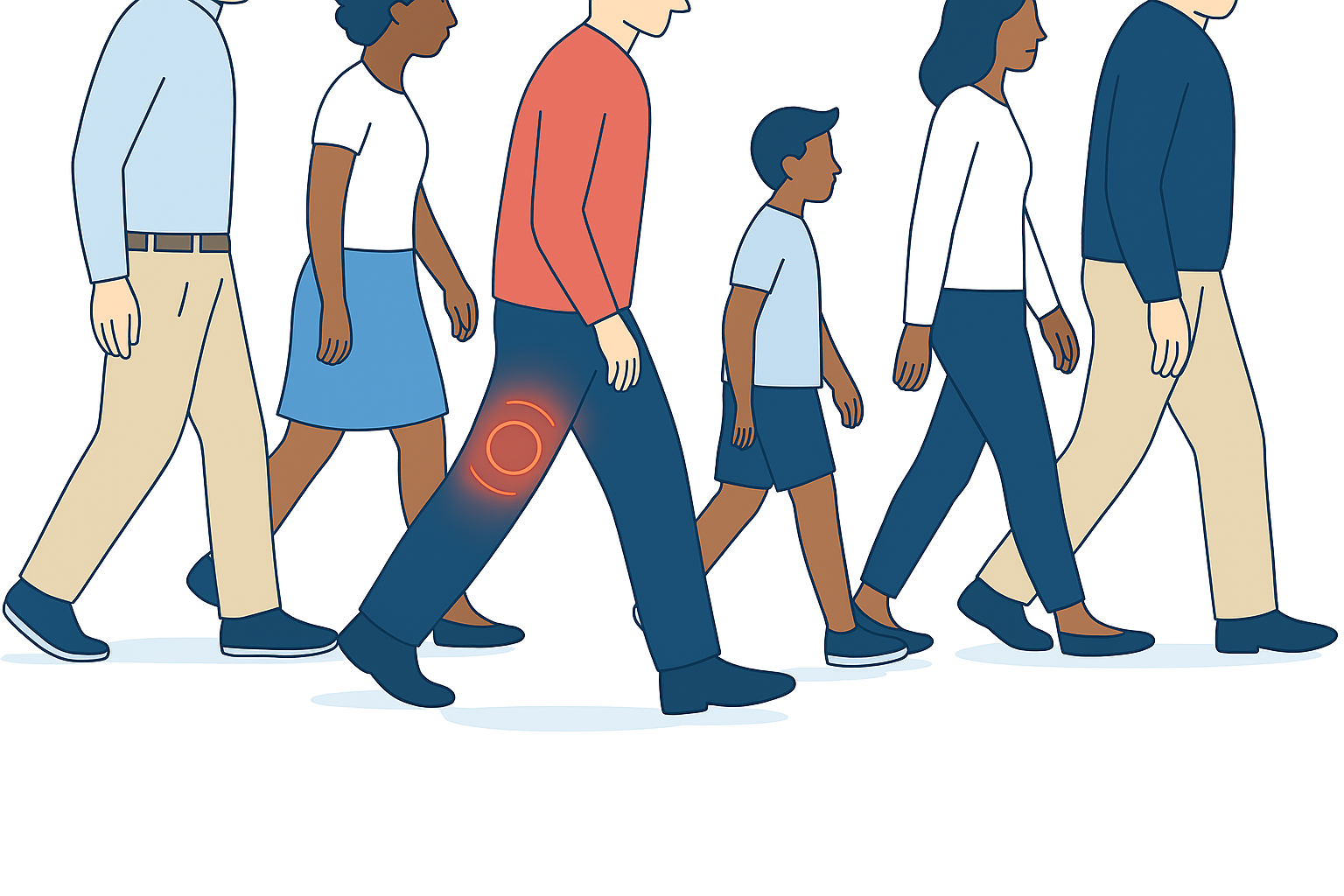NYC Earthquake Saturday Night: 3.0 Tremor Shakes Metro Area

NEW YORK CITY – A magnitude 3.0 earthquake struck the New York metropolitan area Saturday evening, sending brief tremors through one of the nation’s most densely populated regions and prompting immediate response from city emergency officials.
The NYC earthquake Saturday night originated in Hasbrouck Heights, New Jersey, just eight miles west of Manhattan’s Central Park, according to the U.S. Geological Survey (USGS). The shallow tremor, occurring at a depth of approximately 6.2 miles underground, was felt across parts of New York City and northern New Jersey around 8:45 PM local time.
NYC Emergency Management quickly mobilized response protocols, issuing public safety guidance through social media channels while coordinating with partner agencies to assess potential damage. The agency confirmed that while the New Jersey earthquake was felt throughout the metropolitan area, no major impacts or injuries were immediately reported.
This seismic event underscores the ongoing geological activity in the Northeast’s Ramapo Fault system and highlights the importance of emergency preparedness in urban areas not typically associated with frequent earthquake activity.
Immediate Response and Public Safety Measures
NYC Emergency Management demonstrated swift coordination in the aftermath of the NYC tremor, immediately activating established earthquake response protocols. The agency’s rapid deployment of public information campaigns reflected lessons learned from previous seismic events in the region.
Official Emergency Response Timeline:
- 8:45 PM: Earthquake detected by USGS monitoring stations
- 8:52 PM: NYC Emergency Management issues first public alert
- 9:15 PM: Comprehensive safety guidance posted on social media
- 9:30 PM: Coordination established with regional partner agencies
The city’s emergency management team emphasized that earthquake preparedness NYC protocols worked effectively, with no reports of structural damage or service disruptions to critical infrastructure systems.
Public Safety Guidance Issued
NYC Emergency Management provided comprehensive instructions for residents following the tremor:
Immediate Actions Recommended:
- Check surroundings for hazards such as shifted items or falling debris
- Inspect homes and workplaces for cracks or structural changes
- Report any damage through proper channels (311 for non-emergencies)
- Remain alert for possible aftershocks
Emergency Contact Protocols:
- 911: Life-threatening emergencies only
- 311: Non-emergency damage reports
- USGS: Earthquake experience reports
- NotifyNYC: Official city alerts and updates
Geological Context: Understanding the Ramapo Fault System
The Ramapo Fault earthquake represents typical seismic activity for the Northeast region, where geological forces continue to influence the landscape despite the area’s distance from major tectonic plate boundaries.
Regional Seismic Characteristics
The earthquake originated within the Ramapo Fault system, a complex network of geological fractures extending through New York, New Jersey, and Pennsylvania. This fault system has generated numerous small to moderate earthquakes throughout recorded history.
Key Geological Facts:
- Fault Length: Approximately 185 miles through three states
- Historical Activity: Regular small earthquakes (magnitude 2-4)
- Last Significant Event: 2.3 magnitude earthquake in December 2024
- Depth Profile: Most regional earthquakes occur 3-10 miles underground
Despite the relatively minor magnitude, the shallow earthquake depth of 6.2 miles allowed ground motion to be felt across a wide area, creating the characteristic brief swaying sensation reported by residents throughout the metropolitan region.
Social Media Response and Public Reaction
The earthquake generated immediate social media activity, with residents across the region sharing their experiences and seeking information about the unusual event.
Notable Public Reactions
The Empire State Building’s official response on social media provided a moment of levity during the emergency situation. The iconic skyscraper’s Twitter account posted simply: “I AM FINE” – a reference that quickly went viral among New Yorkers.
Social Media Trends:
- #NYCEarthquake: Over 10,000 mentions within first hour
- #NewJerseyEarthquake: Trending topic across tri-state area
- Emergency hashtags: #NYC311 and #NotifyNYC gained traction
- Safety discussions: Increased engagement with emergency preparedness content
Residents reported feeling the earthquake as a brief rolling or swaying motion lasting 10-15 seconds, with some describing it as similar to a large truck passing nearby or construction vibrations.
Historical Perspective: Northeast Seismic Activity
While earthquakes remain relatively uncommon in the Northeast compared to western states, the region experiences regular low-magnitude seismic events that serve as important reminders of ongoing geological processes.
Recent Regional Earthquake History
Significant Northeast Earthquakes (Past Decade):
- 2011: 5.8 magnitude Virginia earthquake felt throughout NYC
- 2020: 2.6 magnitude earthquake in Queens, New York
- 2023: 3.1 magnitude earthquake in Connecticut
- 2024: Multiple 2.0-2.5 magnitude events in New Jersey
The Saturday night earthquake NYC fits within established patterns of regional seismic activity, though events of magnitude 3.0 or higher occur only several times per year in the immediate metropolitan area.
Scientific Monitoring and Research
The USGS maintains extensive seismic monitoring networks throughout the Northeast, with multiple stations providing real-time data on earthquake activity. This comprehensive monitoring system enables rapid detection and analysis of seismic events.
Regional Monitoring Capabilities:
- Detection Speed: Events identified within 2-3 minutes
- Location Accuracy: Precise epicenter determination within miles
- Magnitude Assessment: Immediate preliminary measurements
- Public Information: Rapid dissemination through official channels
Infrastructure Impact and Emergency Preparedness
The minor earthquake provided an opportunity to evaluate emergency response systems and infrastructure resilience in one of the world’s most complex urban environments.
Critical Infrastructure Assessment
Initial reports indicated that major infrastructure systems continued operating normally throughout the seismic event, demonstrating the effectiveness of earthquake-resistant design standards implemented in recent decades.
Infrastructure Status Report:
- Transportation: No disruptions to subway, bus, or bridge operations
- Utilities: Electrical grid and water systems functioning normally
- Communications: Cell towers and internet services unaffected
- Emergency Services: All first responder capabilities maintained
Building Safety and Inspection Protocols
NYC Emergency Management activated established building inspection protocols, though the earthquake’s minor magnitude reduced the likelihood of structural damage to properly constructed buildings.
Post-Earthquake Inspection Priorities:
- Critical Facilities: Hospitals, schools, emergency services
- Infrastructure: Bridges, tunnels, major transportation hubs
- Residential Buildings: Focus on older construction and vulnerable populations
- Commercial Structures: High-rise buildings and large occupancy facilities
Expert Analysis and Future Preparedness
Seismologists and emergency management experts used the event as an opportunity to reinforce public education about earthquake preparedness in urban environments not typically associated with frequent seismic activity.
Scientific Community Response
Dr. Sarah Chen, Regional Seismologist (Columbia University): “While a 3.0 magnitude earthquake poses minimal danger, it serves as an important reminder that the Northeast does experience regular seismic activity. These smaller events help us better understand local fault systems and improve our preparedness for potentially larger future earthquakes.”
Professional Assessment Highlights:
- Aftershock Probability: Low likelihood of significant follow-up tremors
- Structural Damage: Minimal risk given magnitude and depth
- Public Safety: Event reinforces importance of preparedness education
- Research Value: Data contributes to regional seismic modeling
Long-term Preparedness Initiatives
The earthquake highlighted ongoing efforts by city and state officials to enhance earthquake preparedness in the Northeast region.
Key Preparedness Programs:
- Public Education: Regular emergency preparedness campaigns
- Building Codes: Updated seismic resistance requirements
- Emergency Training: Regular drills and response exercises
- Communication Systems: Enhanced alert and notification capabilities
Conclusion: Vigilance in an Unlikely Place
The NYC earthquake Saturday night serves as a valuable reminder that seismic activity can occur anywhere, even in regions not traditionally associated with frequent earthquakes. While the 3.0 magnitude tremor caused no damage or injuries, it demonstrated the effectiveness of emergency response systems and highlighted the importance of ongoing preparedness efforts.
NYC Emergency Management’s rapid response and comprehensive public communication reflected years of planning and coordination with regional partners. The event provided an opportunity to test systems, educate the public, and reinforce the message that emergency preparedness remains essential even in seemingly low-risk environments.
As seismologists continue monitoring for potential aftershocks and analyzing data from the event, residents can take comfort in knowing that established emergency protocols functioned effectively. The earthquake ultimately reinforced the resilience of the metropolitan area while serving as a practical reminder of the importance of staying informed and prepared for unexpected events.










